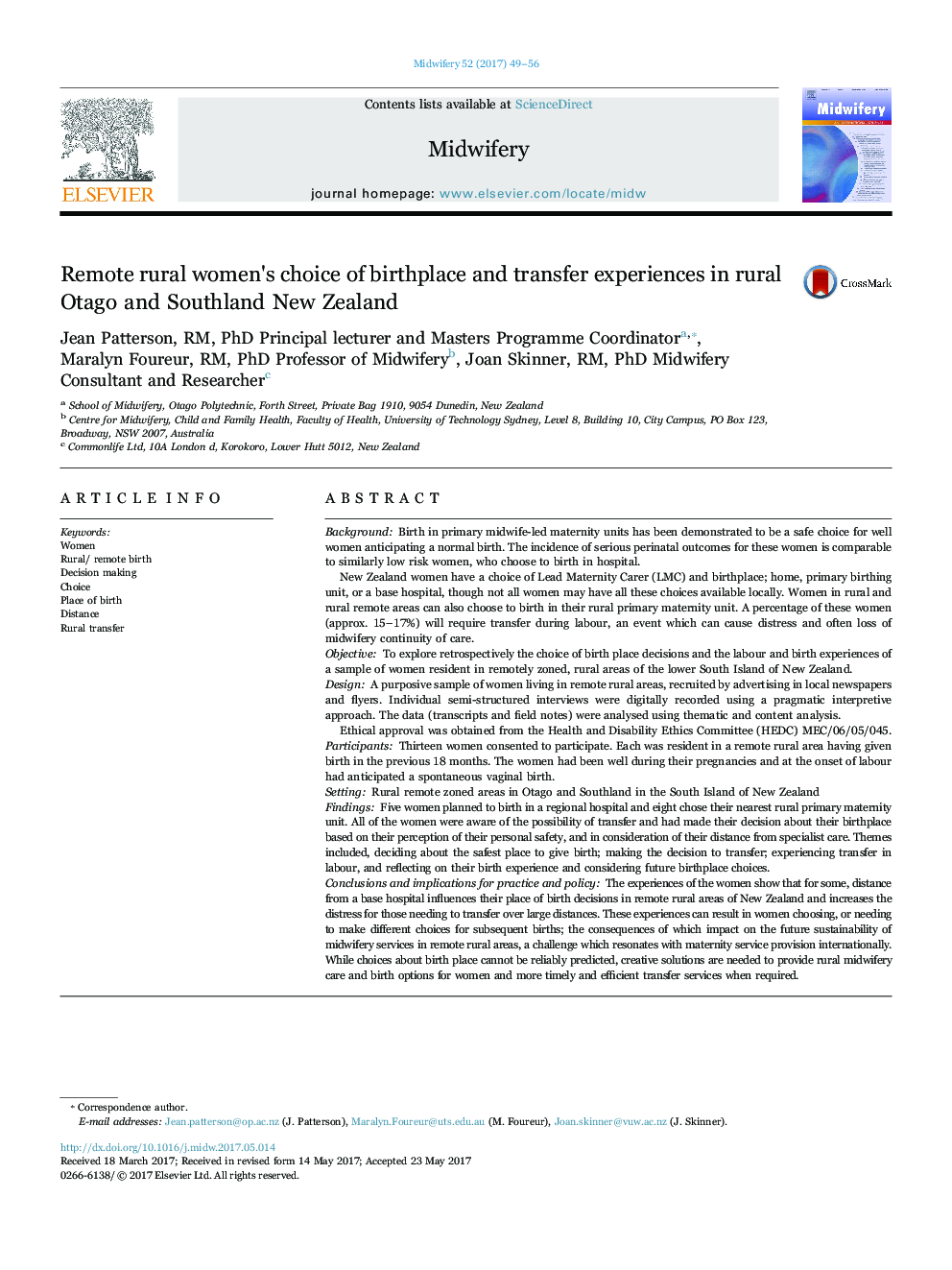| کد مقاله | کد نشریه | سال انتشار | مقاله انگلیسی | نسخه تمام متن |
|---|---|---|---|---|
| 5122305 | 1487132 | 2017 | 8 صفحه PDF | دانلود رایگان |

- The women chose their birthplace on the basis of where they felt safest and in relation to the distance to the nearest base hospital
- The possibility of transfer should there be a need had been discussed with each woman by her midwife during pregnancy
- The women who began labour in their rural area and who needed to transfer found the transfer stressful and were frustrated with delays
- Most who transferred did not expect that they would attempt, or be encouraged to birth in their rural area in the future
BackgroundBirth in primary midwife-led maternity units has been demonstrated to be a safe choice for well women anticipating a normal birth. The incidence of serious perinatal outcomes for these women is comparable to similarly low risk women, who choose to birth in hospital.New Zealand women have a choice of Lead Maternity Carer (LMC) and birthplace; home, primary birthing unit, or a base hospital, though not all women may have all these choices available locally. Women in rural and rural remote areas can also choose to birth in their rural primary maternity unit. A percentage of these women (approx. 15-17%) will require transfer during labour, an event which can cause distress and often loss of midwifery continuity of care.ObjectiveTo explore retrospectively the choice of birth place decisions and the labour and birth experiences of a sample of women resident in remotely zoned, rural areas of the lower South Island of New Zealand.DesignA purposive sample of women living in remote rural areas, recruited by advertising in local newspapers and flyers. Individual semi-structured interviews were digitally recorded using a pragmatic interpretive approach. The data (transcripts and field notes) were analysed using thematic and content analysis.Ethical approval was obtained from the Health and Disability Ethics Committee (HEDC) MEC/06/05/045.ParticipantsThirteen women consented to participate. Each was resident in a remote rural area having given birth in the previous 18 months. The women had been well during their pregnancies and at the onset of labour had anticipated a spontaneous vaginal birth.SettingRural remote zoned areas in Otago and Southland in the South Island of New ZealandFindingsFive women planned to birth in a regional hospital and eight chose their nearest rural primary maternity unit. All of the women were aware of the possibility of transfer and had made their decision about their birthplace based on their perception of their personal safety, and in consideration of their distance from specialist care. Themes included, deciding about the safest place to give birth; making the decision to transfer; experiencing transfer in labour, and reflecting on their birth experience and considering future birthplace choices.Conclusions and implications for practice and policyThe experiences of the women show that for some, distance from a base hospital influences their place of birth decisions in remote rural areas of New Zealand and increases the distress for those needing to transfer over large distances. These experiences can result in women choosing, or needing to make different choices for subsequent births; the consequences of which impact on the future sustainability of midwifery services in remote rural areas, a challenge which resonates with maternity service provision internationally. While choices about birth place cannot be reliably predicted, creative solutions are needed to provide rural midwifery care and birth options for women and more timely and efficient transfer services when required.
Journal: Midwifery - Volume 52, September 2017, Pages 49-56